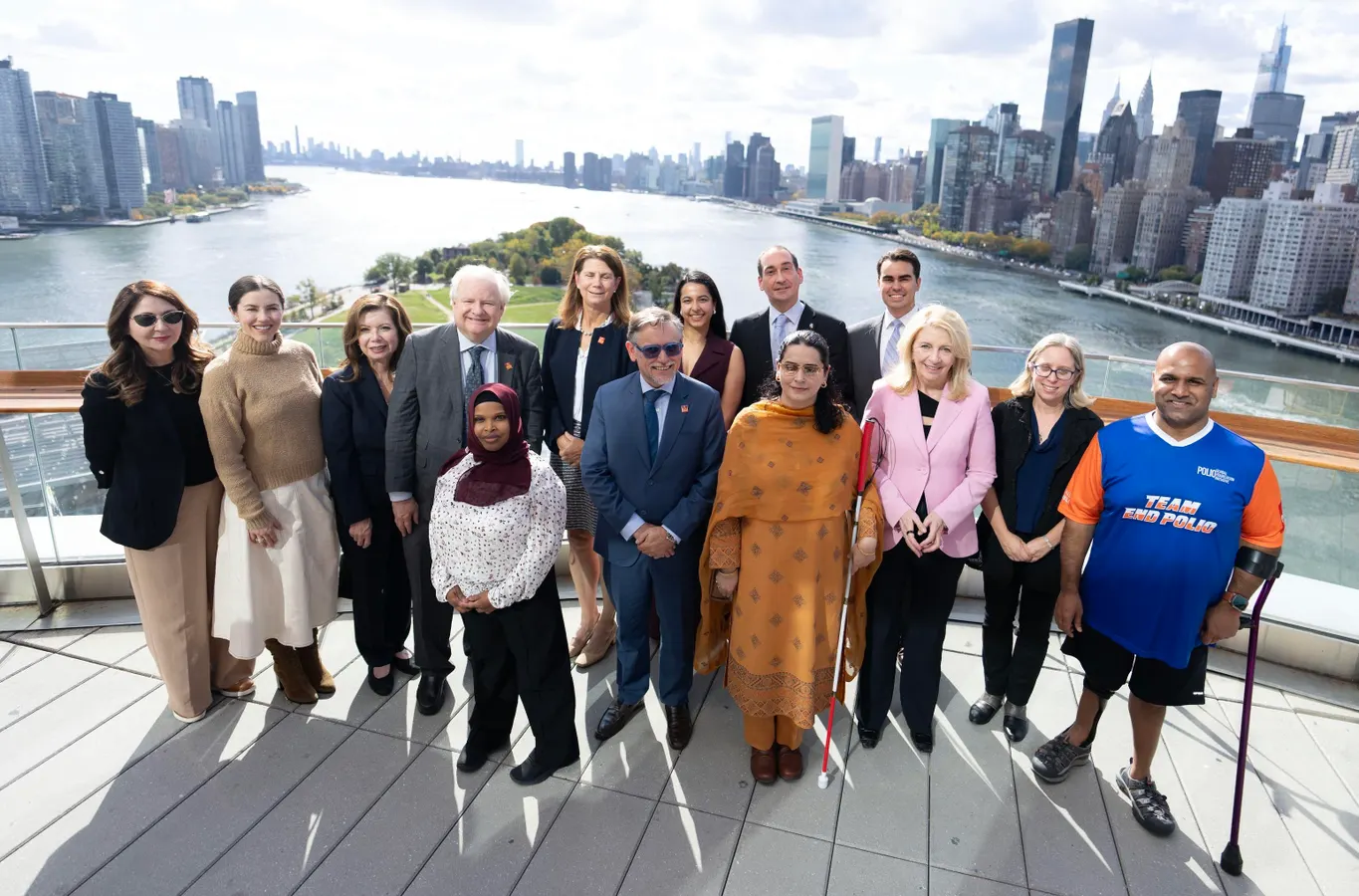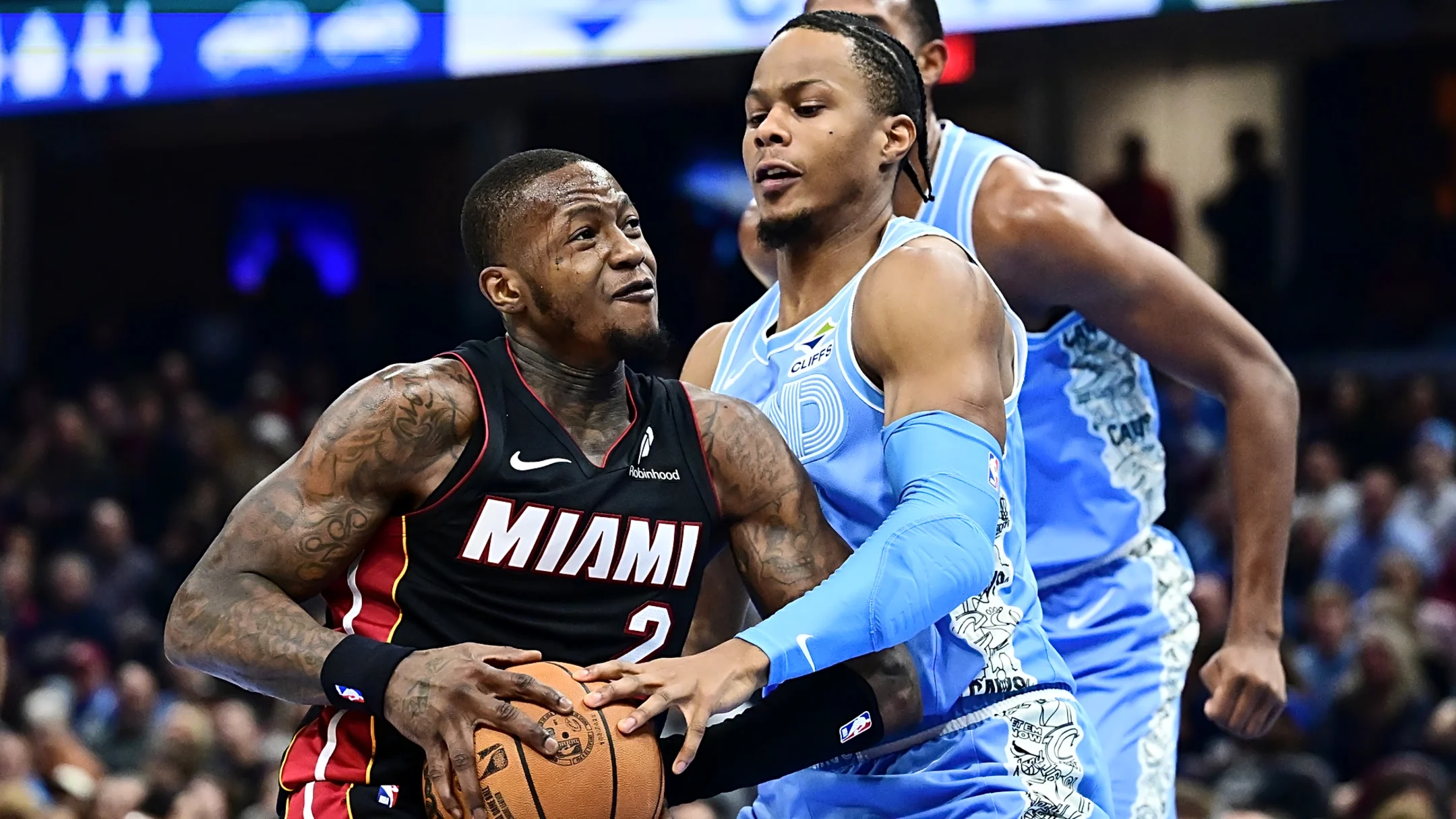Copyright forbes

UNICEF and fellow partners of the Global Polio Eradication Initiative held a gathering on World Polio Day on October 24, 2025, near the ruins of the smallpox hospital and the FDR Hope Memorial on Roosevelt Island. Pictured here are speakers at that event from (L to R): Sheeba Afghani, UNICEF Polio SBC Chief; Chandler Garcia, UNICEF USA Next Gen; Dr. Rose Cardarelli, Rotary International; Prof. Carl Kurlander, Film maker ‘The Shot Felt Around the World’; Safia Ibrahim, Global Vaccine Advocate, Polio Survivor; Dr. Kathy Neuzil, Polio Director, Gates Foundation; Steven Lauwerier, Polio Director, UNICEF; Trusha Mukherjee, UN Press Fellow; Jan Busch, Social Counsellor, German Permanent Mission to the UN; Saima Saleem, Pakistan Permanent Mission to the UN; Jarrett Lash, 14th UNA-USA Youth Observer to the UN; Catherine Russell, UNICEF Executive Director; Prof. Hannah Wunsch, Prof. of Anesthesiology and writer; Ramesh Ferris, Team End Polio Champion and polio survivor. (Photo: Courtesy of UNICEF) (c)UNICEF/pellor Here’s a multiple-choice question. When you get really close to a goal that you’ve worked towards for decades, should you: Redouble efforts. Stay the course. Reverse course and do less. Number three may not look like the best of the three choices but it does seem to be what the U.S. government is doing at this moment with the efforts to eradicate polio. Over the course of nearly four decades, the Global Polio Eradication Initiative has gotten the world closer than it’s ever been to completely getting rid of the virus that less than 80 years ago was still terrorizing much of the world, including killing several thousand Americans and paralyzing tens of thousands of Americans each year. But the big question in 2025 is what will happen now with the Trump administration progressively pulling support away from polio eradication efforts both directly and indirectly like pulling blocks from a Jenga tower? Global Polio Eradication Is Closer Than It’s Ever Been This is a particularly crucial moment in dealing with the poliovirus because when you’ve got some major enemy on the ropes, you don’t want to go, “Let’s find something else to do.” Many of the GPEI leaders met on Roosevelt Island, New York City, on October 24 for World Polio Day. The following is a video from that meeting: I’ve already detailed in Forbes in 2020, then in 2023 and once again in 2024 about how prevention and control efforts have taken polio from being a major problem in practically every country to a disease that is now present in only a limited number of countries. “We’ve gone from thousands of cases a day to just hundreds a year,” explained Steven Lauwerier, director of polio eradication for UNICEF. That’s huge with a capital “U.” Because “u” don’t see human infectious diseases eradicated from Earth that often. It’s pretty unique. In fact, it’s happened only once with smallpox being declared eradicated on May 8, 1980. Rinderpest was deemed eradicated on October 14, 2010. But that’s more directly relevant if you happen to be a cow and chew cud since rinderpest used to infect ruminants and not humans. Therefore, polio could soon be just the second human disease to be eradicated, meaning that no cases and circulating viruses remain anywhere on Earth. Not having to worry about the poliovirus anymore would not only save lives but also save tons of money and resources. MORE FOR YOU So, it does make sense to follow the words of that Steve Winwood song that go, "While you see a chance, take it." The GPEI was launched in 1988 to do guess what? As the “eradication” in its name suggests, this public-private partnership of national governments around the world paired with the WHO, Rotary International, the U.S. Centers for Disease Control and Prevention, the United Nations Children’s Fund, the Gates Foundation and Gavi, the Vaccine Alliance has been investing years of time, effort and resource towards achieving the “e” goal. And based on my conversations with key GPEI members during a GPEI gathering coinciding with the United Nations General Assembly week in September and an October 24 meeting on October 24 at Roosevelt Island, also in NYC. the GPEI seem to have no intention to let up now that the numbers of polio cases around the world have dwindled. This Is A Pivotal Moment For Global Polio Eradication Efforts Lauwerier did add how this is a particularly difficult and pivotal time in the whole polio eradication process. He emphasized how it gets harder and harder the closer you get to zero cases. It’s sort of like the difference between getting rid of a lot of hair on your body when you’ve got a lot of it versus getting rid of every single strand. “Success is measured by zero,” Lauwerier emphasized. “Even if you have only one case, you haven’t succeeded. It’s an unthankful kind of operation.” He went to talk about the places where polio remains persistent but progress is being made such as “in Yemen, where there are variant viruses, and completely stopping major outbreaks in Madagascar where hundreds of children were paralyzed. Not the easiest places to work.” Moreover, if eradication efforts do let up in any way, the poliovirus certainly will at least “keep hanging on” as that song goes. But the “supreme” concern is that it will once again spread further back across places that had previously eliminated the virus such as the U.S. where polio was eradicated in 1979. Lauwerier and others described the virus as being very tough with the “instincts” and programming to survive. Taking this virus for granted would be sort of like taking for granted a political foe after he or she has lost election or a sports opponent after its gotten far behind in a game. You never know when they may come storming back. Trump Administration Actions Have Led To Funding And Resource Gaps For Polio Eradication All of this brings us back to the Trump administration, which has been delivering more and more b--- slaps to public health efforts since Donald Trump ascended to the U.S. Presidency in January. For example, his administration with the help of Elon Musk’s so-called Department of Governmental Efficiency, known as DOGE, essentially eradicated the United States Agency for International Development, known as USAID. USAID did support a number of activities that benefitted polio eradication efforts, ranging from vaccination and sanitation programs to employing “soft power” to provide more political and economic stability to different areas so that polio prevention and control efforts such as vaccination and sanitation could continue safely. But the Trump administration and DOGE certainly didn’t stop there with the cutting crew efforts. They’ve slashed the funding and personnel of the Centers for Disease Control and Prevention and other parts of the U.S. Department of Health and Human Services. There’s also been major funding cuts to different external organizations including partners of the GPEI like the WHO, UNICEF and Gavi. For example, in April, Michelle Nichols reported for Reuters about how UNICEF projected its budget in 2026 to be at least 20% less than it was in 2024, based on the Trump administration’s cuts to date. Moreover, who knows what impact cuts to the National Institute of Health will have on polio eradication since you kind of need real science to battle diseases. If all of these actions do allow the poliovirus to spread and kill more people as a result, this could literally be a deaths-by-a-thousand-cuts situation. “The CDC is still a full partner,” Lauwerier told me during the week that the United Nations General Assembly met in September. “We still have regular contact with CDC. They are participating at a technical level and still providing funding for polio eradication.” He added, “The lab infrastructure and polio program within CDC is still there.” Of course, everything that Laurwerier said was in the present tense because these days who knows what will happen in the coming months or even tomorrow. Heck people currently working at the CDC probably don’t even know what will happen or even how long they will be able to keep their jobs. Polio Eradication Efforts May Be Further Hampered By Growing Misinformation and Disinformation Another challenge is the misinformation and disinformation about infectious diseases and vaccine in particular that have been spreading like toilet spray. One has to wonder what impact moves by Secretary of HHS Robert F. Kennedy, Jr. will have on this. For example, in June, Kennedy Jr., abruptly replaced all members of the Advisory Committee on Immunization Practices, or ACIP, that had typically advised CDC on vaccine-related policies. Historically, members of the ACIP have gone through extensive and documented vetting processes to ensure that they have the scientific and medical expertise in vaccine-related areas. However, it is not clear what criteria Kennedy, Jr. used to appoint a completely new set of ACIP members. Lisa Schnirring and Mary Van Beusekom, writing for CIDRAP, the Center for Infectious Disease Research and Policy at the University of Minnesota, described a number of these new members as “vaccine critics” and pointed out various potential conflicts of interest that they may have. Another challenge is the spreading false narrative that global health efforts like polio eradication are not relevant to Americans and are more about the U.S. doing charity work for other countries. A concern is that the rhetoric around the shuttering of USAID and the Trump administrations plans to withdraw the U.S. from the WHO may feed further into this narrative. It can be tough to combat such a narrative when polio has kind of been the victim of its own success. Many Americans nowadays have little idea of how devastating polio can be since vaccination has been so effective at making sure that no one has seen the disease for years. As a result, many Americans in 2025 may not be aware of how grateful most Americans in 1955 were when the polio vaccine finally arrives. Getting More People Understanding And Involved With Global Polio Eradication Efforts This short-term collective memory problem is what motivated Carl Kurlander, who co-wrote the movie St. Elmo’s Fire and co-produced a number of TV shows like Saved by the Bell: The New Class and Hang Time, to produce the award-winning documentary The Shot Felt ‘Round The World that chronicled how Jonas Salk, MD, and his team developed the polio vaccine that helped overcome one of the most feared diseases of the twentieth century. “I read these stories that say no one cares about polio, it’s gone,” Kurlander told me. “But the story of polio is like a horror movie where every summer, kids would get sickened and need wheelchairs and iron lungs. I had to explain it to my daughter like a bedtime story.” He went on to say that “The story has had a good ending," though, with the polio vaccine and the eradication efforts.” With so much uncertainty swirling around the U.S. government right now and the Trump administration pulling resources from science, health and particularly global health efforts, my question to different attendees at the recent GPEI meetings was what needs to be done to keep eradication efforts going. Kurlander spoke of talking directly to the people around the coutnry and telling them to “Take a shot at changing the world,” while emphasizing that the pun was completely intended. “The world continues to quietly move together, with or without governments,” said Kurlander. “It’s always been the people. And that spirit is something that needs to be rekindled urgently, because if we don’t hold together and let people know about the importance of polio eradication, then this will be on the back page of magazine and all these other places.” It’s also important to emphasize how polio could very well come back. Darien Sutton, MD, MBA, an ABC News medical correspondent emphasized, “Nearly any infectious disease is only an airplane flight away.” He gave the example of a single measles case from outisde the U.S. causing an outbreak where he was working as an emergency room physician in 2019. Despite all that has happened in 2025, hope still permeated the rooms at the meetings. Lauwerier mentioned how other donors were trying to step up to fill the gaps left by the Trump administration. Kurlander urged creative people to find ways to spread the word about polio efforts. Others pointed to the continuing successes of eradication efforts. And Catherine Russell, the Executive Director of UNICEF, assured everyone, “UNICEF is here. UNICEF will continue to be here.” The hope is that such perseverance of the members of the GPEI could some day mean that the poliovirus is no longer here, there or anywhere. Editorial StandardsReprints & Permissions



